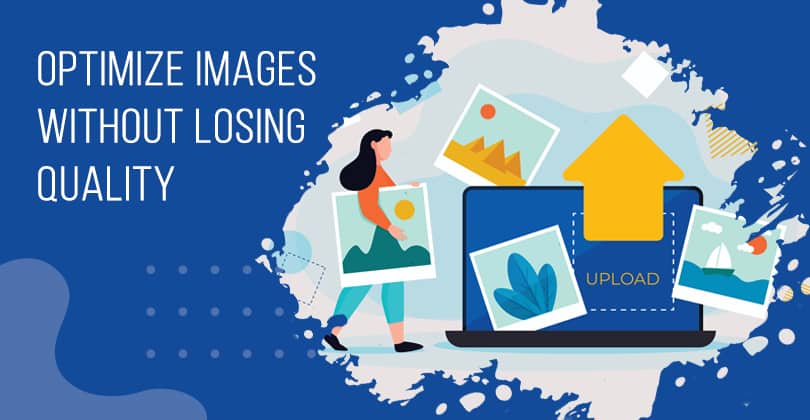


Such strategy requires having responsive web design, keyword optimization, and optimizing images for faster loading.
#Optimize images for web without losing quality how to#
However, knowing how to optimize images for the web can prove to be very useful for implementing a good SEO optimization strategy. When talking about SEO, most content creators tend to be focused mostly on the text and other general settings related to the domain and the website hosting. In turn, this affects the server load time, the website speed as well. However, all this quality usually requires a proportionally large file size to contain so much information. Most people love quality websites, which usually contain large and detailed images. High performance of a website is the connection between image or video optimization and conversion rate Media elements such as video and images have the biggest share in the total website weight (over 80% as in the shown data), and while here we focus on images, video optimization is an important topic that we’ll address in a separate article. Source: as of September 2021, own data cumulation Additionally, image optimization helps avoid Google penalties for slow websites, since sites that load faster appear higher in search results.Īlthough image size is the most important factor and the main topic of this article, there are also other optimization aspects such as image alt tag and file name, which have to be considered.Īverage weight in Kilobytes Average weight in kilobytes for a website by file type It also helps with having images as a traffic source and utilizing image search to rank well on the Google image search tab. Image optimization is of great importance for website SEO, page load speed, and overall user experience. How do image optimization solutions work.This can be done through various image optimization tools and plug-ins. Therefore, images have to be optimized before they are published on a website and reduced to the preferable size. Even a delay in page loading of less than 1 second can result in a drop in sales, fewer page views, and unhappy website visitors. So, even if you have good content, if you are using non-optimized images, your SEO will suffer and the site will then automatically get a lower position in website rankings.īefore posting images on a website, always pay attention to three important factors: the physical size of the image (height and width), the image format (JPEG, PNG, WEBP, AVIF or other formats), and the image size in kilobytes. Images on a website increase visitor engagement, and if you use non-optimized images, they will significantly slow down your site. In most cases, it even helps save and reduce data usage on mobile data plans, and so on. The most popular ways to do image optimization include resizing, caching, or compressing the image. Smaller images load faster and therefore they improve the user’s experience. When a web page opens, it loads all of its elements, such as text, images, links, or videos, for the user to see. Image optimization refers to reducing the size of images with little or no loss of quality on a web page. The majority of the website’s data is usually comprised of images and image optimization is used to make the pages lighter in size, use fewer network resources, and improve the loading time of a webpage.


 0 kommentar(er)
0 kommentar(er)
